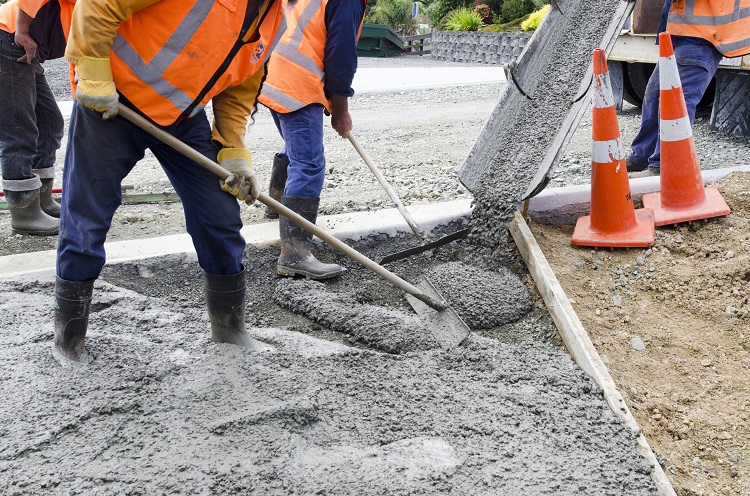Concrete Safety & Risk Prevention

The ready-mix industry is a big part of the U.S. and has changed a lot through the years. At the turn of the 20th century, most concrete was manufactured at building sites, and employees had to shovel all the ingredients into drums. Workers were exposed to hazards not only from the construction site, but also from the actual manufacturing of the ready-mix concrete.
Unfortunately, this led to high injury rates. One of the first steps to improve safety was to move ready-mix manufacturing away from the construction area. This was made possible by the development of the ready-mix truck, which allowed concrete to be manufactured a safe distance from the usage area. However, the risk of injury due to repetitive motion, heavy lifting, and slips, trips, and falls still existed at the off-site location.
The next step to create a safer environment was to reduce physical labor and move toward automation. Thus, the batch plant was born. Conveyer belts loaded by front-end loaders and dump trucks filled the silos, reducing the need for shovels and heavy lifting.
However, injuries continued to occur, as humans were still an integral part of the process. After WWII, PPE such as hardhats, safety-toe and slip-resistant boots, and eye protection became part of the industry.
Still, repetitive motion injuries continued to occur. Safety and ergonomic professionals were hired to implement job rotation and improve on-the-job safety training.
In the early 2000s, another hazard was identified, crystalline silica, which is a carcinogen to the human lungs. It is a very small particle that is generated by crushing, cutting, or grinding rocks and sand. N95 respirators and/or air quality management systems were implemented in plants where this was a concern.
Even with all these changes and improvements, hazards still exist in all industries and work areas.
The ready-mix industry lacks historical statistics on frequency and severity of injuries. However, OSHA and state, national, and worldwide associations like the Global Cement and Concrete Association (GCCA) have started to share industry data, flag hazards, and communicate best practices.
What are some of the current hazards within the industry?
Slips, trips, and falls due to sand and water are still an area of concern, so cleaning and dedicated walkways can help. Entering and exiting heavy equipment and trucks is another area of concern. To reduce the risk of injury, it is important to establish three-point contact every time a vehicle or ladder is used.
Transportation of ready-mix concrete to construction sites also presents issues, including motor vehicle accidents. To reduce risk, new vehicles can be ordered with telematics systems, and older vehicles can be retrofitted. Telematics systems are electronic fleet tracking and management systems that allow for tracking of vehicles, wireless and handsfree communication, emergency warning systems, satellite tracking, and much more. Telematics systems also assist with better scheduling of trucks, routing that avoids heavy traffic, and improved equipment maintenance.
In addition, the industry needs to continue having safety discussions with staff. Consider holding simple daily or weekly toolbox talks where near-misses and other areas of concern can be discussed and addressed by all. Your insurance carrier may be willing to provide a risk analysis assessment of your plant as well as your fleet. That can be a great way to identify areas of concern. You may be able to use your carrier’s data to analyze previous injuries and to aid in developing a prevention program.
Though the ready-mix industry has become much safer, there are still opportunities to improve safety within your company.
An insurance company that cares about you and insuring the things you wish to be insured.
Get a Quote> Find an Agent>

